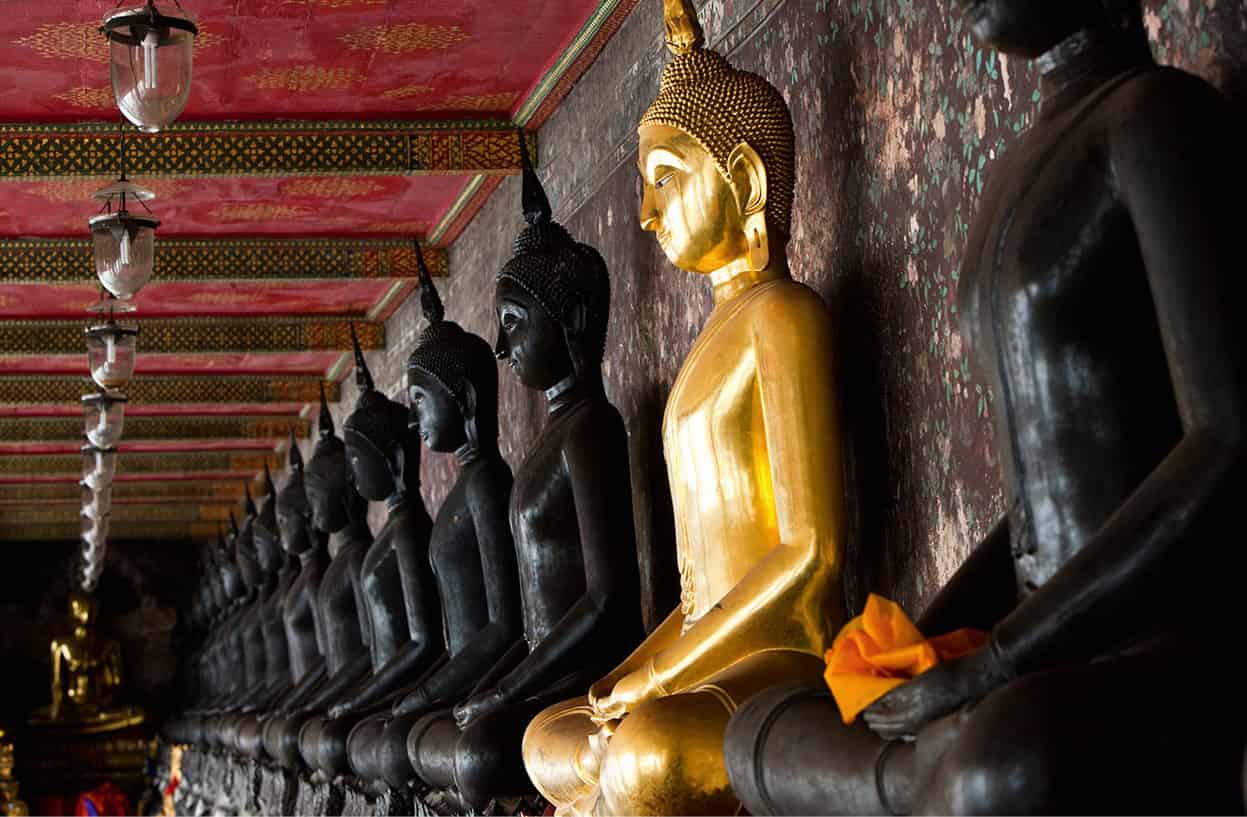A typical Thai wat (temple) has two enclosing walls that divide it from the secular world. The monks’ quarters are situated between the outer and inner walls. In larger temples, the inner walls may be lined with Buddha images and serve as cloisters for meditation. This part of the temple is called buddhavasa or phutthawat. Within the inner walls is the bot or ubosot (ordination hall), surrounded by eight stone tablets and set on consecrated ground. This is the most sacred part of the temple and only monks can enter it. The bot contains a Buddha image, but it is the viharn (sermon hall) that contains the principal Buddha images. Also in the inner courtyard are the bell-shaped chedi (relic chambers) or towering Khmer-style spires called prang, which are a variation of chedi and similarly contain the relics of either the Buddha or pious or distinguished people. Salas (pavilions) can be found all around the temple; the largest of these is the sala kan prian (study hall), used for saying afternoon prayers. Apart from Buddha images, various mythological creatures (for more information, click here) are found within the temple compound.

The cloisters at Wat Suthat are lined with Buddha statues, here in the “Subduing Mara” position, denoting a renunciation of worldly desire.
Peter Stuckings/Apa Publications